
Álvaro Joaquim de Melo Siza Vieira is a Portuguese architect, and architectural educator. He is internationally known as Álvaro Siza and in Portugal as Siza Vieira.

The Aqueduct of Santa Clara is the second largest Portuguese aqueduct system. Built between 1626 and 1714, it includes 999 arches stretching for 4 kilometres (2.5 mi) from the spring of Terroso in the municipality of Póvoa de Varzim to the Convent of Santa Clara in the municipality of Vila do Conde.

Rotunda da Boavista, officially known as the Praça de Mouzinho de Albuquerque, is a large roundabout in Porto, Portugal. It honours Joaquim Augusto Mouzinho de Albuquerque, a Portuguese soldier who fought in Africa during the 19th century.
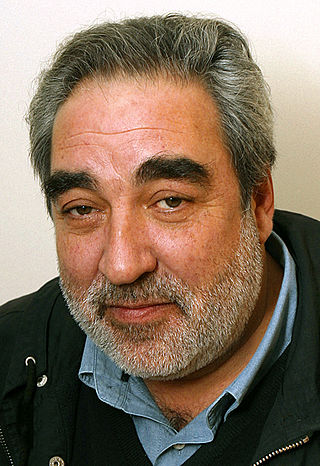
Eduardo Elísio Machado Souto de Moura, better known as Eduardo Souto de Moura, is a Portuguese architect who was the recipient of the Pritzker Architecture Prize in 2011 and the Wolf Prize in Arts in 2013. Along with Fernando Távora and Álvaro Siza, he is one of the alumni of the Porto School of Architecture, where he was appointed a Professor.

The Stock Exchange Palace is a historical building in Porto, Portugal. The palace was built in the 19th century by the city's Commercial Association in Neoclassical style. It is located in the Infante D. Henrique Square in the historical centre of Porto, designated World Heritage Site by UNESCO.
Fernando Luís Cardoso de Meneses de Tavares e Távora, ComSE, simply known as Fernando Távora, was a renowned Portuguese architect and professor.
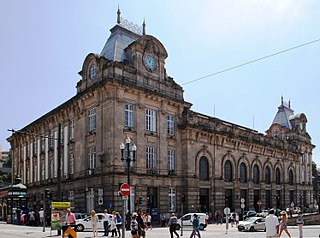
São Bento railway station is a 20th-century railway terminal in the civil parish of Cedofeita, Santo Ildefonso, Sé, Miragaia, São Nicolau e Vitória, in the municipality of Porto, district of Porto. The English translation of São Bento is Saint Benedict. The station is located in the Historic Centre of Porto, which has been declared a UNESCO World Heritage Site and as a National Monument of Portugal.
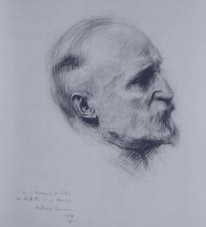
José Marques da Silva was a Portuguese architect and educator.

The Casa dos Bicos is a historical house in the civil parish of Santa Maria Maior, in the Portuguese municipality of Lisbon. The house, built in the early 16th century in the Alfama neighbourhood, has a curious façade of spikes, influenced by Italian Renaissance palaces and Portuguese Manueline styles. It survived the disastrous 1755 Lisbon earthquake that destroyed much of the city, but over time was abandoned as a residence and used as a warehouse. After a 20th-century renovation, it became the headquarters of the José Saramago Foundation and a location of the Museum of Lisbon.

Carnide is a freguesia and district of Lisbon, the capital of Portugal. Located in northern Lisbon, Carnide is north of São Domingos de Benfica and Benfica, east of Lumiar, and directly south of Lisbon's border with Odivelas. The population in 2021 was 18,028.

Marvila is a freguesia and district of Lisbon, the capital of Portugal. Located in eastern Lisbon, Marvila is to the southwest of Parque das Nações north of Beato, and east of Alvalade. The population in 2021 was 35,479.
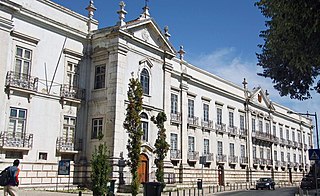
Penha de França is a freguesia and typical quarter of Lisbon, the capital city of Portugal. Located in the historic center of Lisbon, Penha de França is north of São Vicente, east of Arroios, south of Areeiro, and west of Beato. The population in 2021 was 28,475.

The Residence of Águas Férreas is a residence in the civil parish of Cedofeita, Santo Ildefonso, Sé, Miragaia, São Nicolau e Vitória, in the municipality of Porto, in the Portuguese district of Porto.

Jorge Manuel Lopes Moreira da SilvaGOIH is a Portuguese engineer and politician of the Social Democratic Party serving as the Executive Director of the United Nations Office for Project Services, UNOPS, since 2023.

Maria José Marques da Silva (1914-1996) was a Portuguese architect who, like her celebrated father, designed buildings in her native city of Porto. In 1943, she became the first woman to graduate as an architect from the Porto School of Fine Arts.
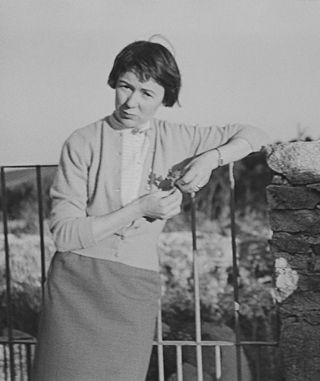
Maria Keil was a Portuguese visual artist. She was born in Silves and died in Lisbon.
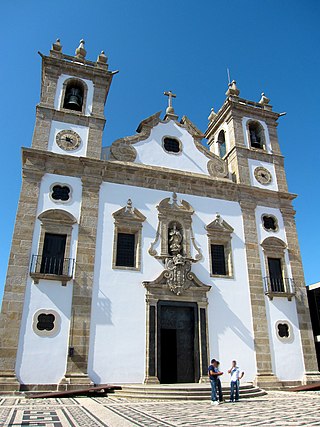
The architecture of Póvoa de Varzim, in Portugal, demonstrates a broad variety of architectural styles over its thousand years of history. 11th-century Romanesque, 16th-century Mannerism, 18th-century Baroque, late 18th-century neoclassicism, early 20th-century Portuguese modernism and late 20th- to early 21st-century contemporary architectural styles and more are all represented in Póvoa de Varzim. As a whole it represents a rich eclectic tradition and innovation shaped by the people, their beliefs and economy.
The following is a timeline of the history of the city of Porto, Portugal.

The Porto School is a movement of modern and contemporary architecture in Portugal. Grounded in the teaching at the Porto School of Fine Arts and the Porto School of Architecture, it is one of the most influential architectural movements in the history of Portuguese architecture. Its main figures, Fernando Távora, Álvaro Siza Vieira, and Eduardo Souto de Moura are some of the most globally renowned Portuguese architects.


















